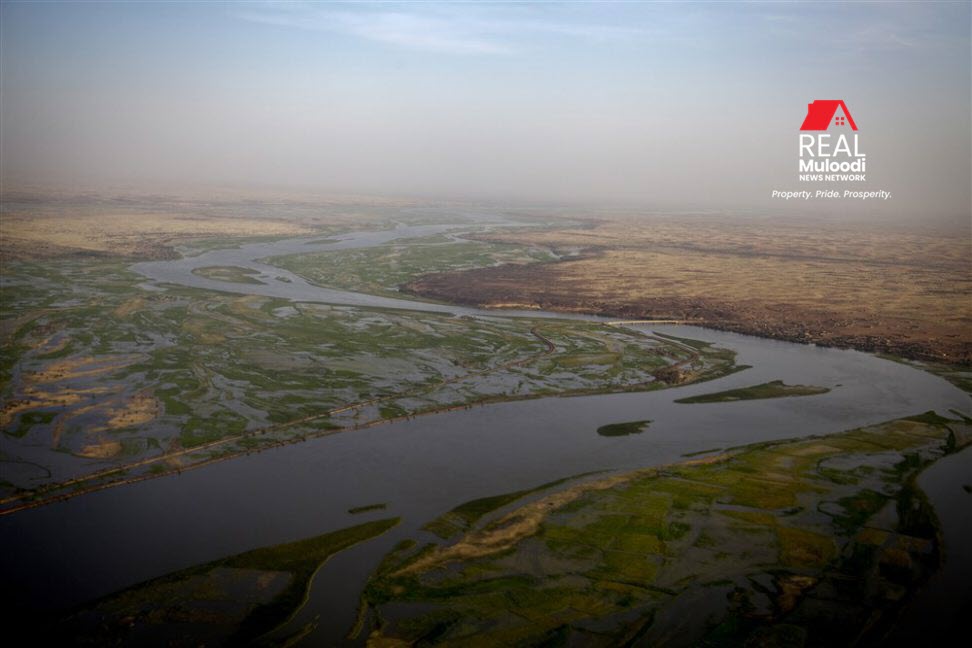UGANDA, Tororo | Real Muloodi News | Thousands of people in Teso North, Busia County, are to benefit from the USh7 billion transboundary Ang’ololo Water Resources Development Project which is to be built along the Malaba River, in Busia at the border of Kenya and Uganda.
The multi-purpose project will see the building of a 40-meter-high dam at Kamachar – Moding, with a reservoir capacity of around 43 million cubic meters, which will provide potable water to over 20,000 people in Kenya and Uganda.
According to Kibwage, the Transboundary Water Project will also help about 127,000 people in Kenya’s Moding, Osajai, and Kamuriai areas and Uganda’s Tororo, Manafwa, and Namisindwa Districts. This development makes this area an excellent land and property investment target.
The dam would also irrigate 1,180 hectares of Kenyan land and 2,120 hectares of Uganda’s land.
Aside from providing water and irrigation, the project will generate 1.75 megawatts of locally used electricity, allowing more people to access Teso North.
Preliminary studies for the Nile Equatorial Lakes Subsidiary Action Program (NELSAP) have been completed, opening the path for resource mobilisation for the project’s execution.
Jacob Kibwage, the project’s Environmental and Social Impact Assessment consultant, stated that after hosting public involvement sessions in Omella, Uganda, and Kemachar and Jairos, Kenya, the project has gained overwhelming support from the local population.
He stated: “It has reached a time when we can no longer continue depending on rain from January to December. Climate change is real and you can attest to that because of the irregular rain patterns we currently experience.”
“The only water that is going to save the people of Teso North is the River Malaba water. Once the dam is complete, we shall be able to harvest water which will be going to the gardens from January to December, hence there will be no time when residents will complain of water shortage,” he said.
“This project is going to change the lives of our people for the better going forward because if we continue depending on natural rain, we will not go far. Once complete, women will not be walking far to look for water because the dam will supply piped water to homesteads and institutions around,” Kibwage said.
He pointed out that the irrigation aspect would boost food production, which could be sold on domestic and foreign markets.
Dismas Odula, the Director of Irrigation and Land Reclamation for the Busia County Government asked inhabitants of Moding, Osajai, and Kamuriai to support the initiative. All necessary safety precautions will be taken.
He urged them to be prepared to embrace agriculture as a business to benefit from the dam project’s economies of scale.
Residents in the project’s catchment area have welcomed it with enthusiasm, claiming that it will help them overcome the poverty that has afflicted them for years and are now willing to embrace farming.
Commercial real estate development is now possible in all three areas. Residents claim that once irrigation water is available, most of them will be ready to harvest fruit. As a result, they suggested building a fruit factory in the sub-county to process pineapples, oranges, jackfruit, and mangoes.
Through its Sio-Malaba-Malakisi River Basin Management initiative, Kenya and Uganda established the Ang’ololo Water Resources Development Project in conjunction with the Nile Equatorial Lakes Subsidiary Action Program (NELSAP).
Its goal is to reduce poverty in the project region by converting subsistence farming into large-scale commercial irrigated land farming.
They will primarily produce high-value horticultural crops while boosting climate change adaptability, correcting environmental degradation, boosting water supply and sanitation, expanding transboundary collaboration, and enhancing agribusiness with crop and livestock production.
READ MORE LIKE THIS:
The Public’s Distrust for the Government Slows Free Land Registration
The Buganda Kingdom Gives Government Deadline to Regularise Tenancy or Risk Eviction
Finance Ministry Presents Projected Budget of USh43 trillion for FY 2022/2023



